At the northern edge of the province, along the Rocky Mountain Trench, the Mackenzie timber supply area, which covers 6.4 million hectares, has faced an onslaught of pine beetles and wildfires peeling through its vast forests of fir, spruce and lodgepole pine.
For decades, major forest companies heavily clear cut the forests in the southern part of the timber supply area, where the drive to nearby mills was cheapest on gas.
The ecosystem has suffered. One herd of southern mountain caribou in the timber supply area is now extirpated, for example, while others are red-listed.
The chief forester tried to lessen the blow with a non-legal “partition” to limit the weight of timber that companies could log from the hard-hit southwestern region. But companies didn’t follow it — in part because the government issued permits for them to log two and a half times more timber than the partition allowed.
This year, the province set a rate of cut it acknowledges is likely to put caribou and fish-bearing watersheds at risk.
Mackenzie is just one of many timber supply areas in B.C. pushing up against ecological limits.
“The province’s biodiversity and ecosystems are under threat,” wrote Minister of Water, Land and Resource Stewardship Nathan Cullen in the province’s new plan to transform its timber-first approach to forest and land management. Its Biodiversity and Ecosystem Health Framework is one of three announcements this fall to realize its goal.
“You get so used to thinking about land as something you can do whatever we want with,” said Garry Merkel, co-author of the province’s Old Growth Strategic Review that set B.C.’s “paradigm shift” into motion.
“You’ve got to change your idea about it to ‘I’m looking after it first, and it’ll look after me,’” Merkel said. “That’s a big shift in thinking.”
A month earlier, the federal government, B.C. and the First Nations Leadership Council announced the Tripartite Framework Agreement on Nature Conservation to protect 30 per cent of B.C.’s lands and waters by 2030, setting aside $1 billion in funding to get there. A week before that, the province launched a "conservation financing mechanism" that will determine how funding gets distributed.
These three announcements — the Biodiversity and Ecosystem Health Framework, the Tripartite Framework Agreement on Nature Conservation and the conservation financing mechanism — each cited another shift B.C. has committed to: First Nations would co-develop the laws and policies to come. This was the first recommendation of the Old Growth Strategic Review, aimed at unrooting the long erasure of Indigenous nations’ jurisdiction and rights over their land.
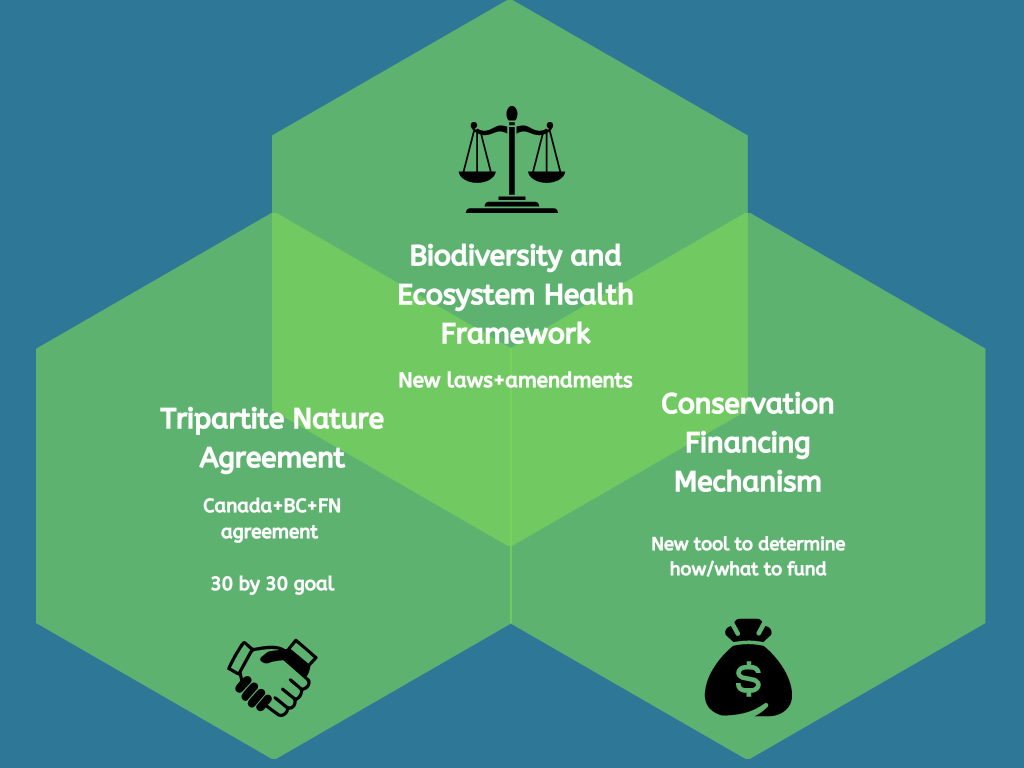
This “paradigm shift” will be put to the test as the announcements give way to their promised councils, negotiations and eventual decisions.
Robert Phillips, the political executive for the First Nations Summit, is encouraged by the intentions so far, but wary of the time-worn grooves of inaction.
“We don’t have the luxury of time,” he said.
How will the old processes change?
For decades, B.C.’s forest industry has been ruled by the steady beat of the allowable cut determination. Every five or 10 years, the province’s chief forester decides how much wood companies can log in a given region. The goal of the process is to keep enough trees in the forest to keep the industry running; it isn’t designed or meant to address things like biodiversity or old-growth forest protection, which it assumes the province has made separate decisions about.
To determine the allowable annual cut, the chief forester starts with a baseline calculation of the amount of trees in a given area and how fast they grow, and then removes things like land impacted by natural disasters such as wildfires and so-called “constraints” like parks and protected areas, as well as an assortment of in-between designations, like old-growth management and wildlife habitat areas, many of them designed in the 1990s, grafted for decades onto a maze of rules and sometimes loopholes.
In the Mackenzie TSA and in other regions throughout the province, those “constraints” are not adequate to protect key ecosystems and habitat.
In Mackenzie, for example, areas earmarked for caribou habitat are largely high-elevation forests; in the winter months, caribou are typically searching for low-lying pine stands, which tend to be more threatened by logging.
The chief forester’s partition to limit logging in the southwest region of the timber supply area was meant to address this and other ecological issues, but companies logged far beyond the partition limit anyway.
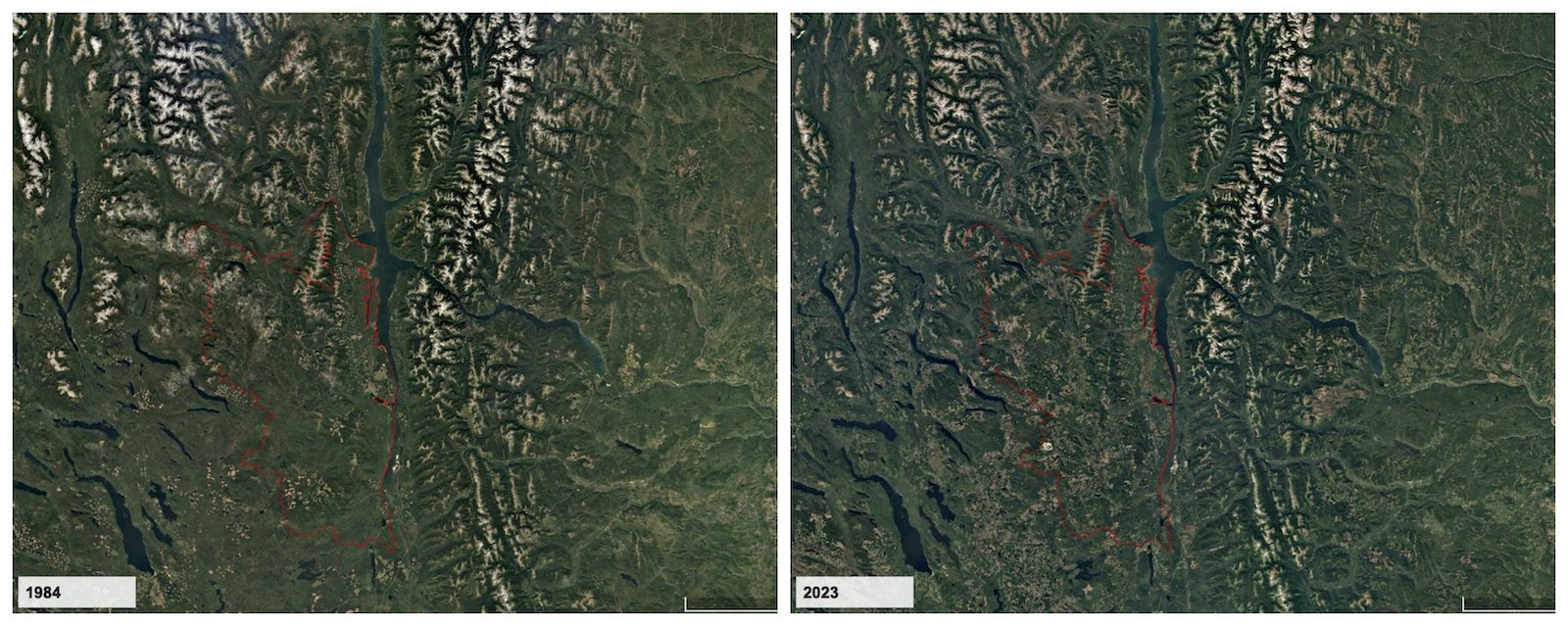
Merkel says the province’s new framework will flip its approach to land management on its head. In this version, ecological health replaces timber as the baseline. Once that ecological health baseline has been established, Merkel says, decisions can be made about what kinds of economic activity the ecosystem can support.
“You can take some things out and you can alter it slightly, but you can't do too much or it starts to disintegrate and fall apart,” Merkel said.
In places like the Mackenzie TSA, that could mean the ecosystem’s health will now be assessed and prioritized before logging and other industries get the go-ahead. It could also mean that tools to support the ecosystem would be legally enforced and monitored — unlike the Mackenzie TSA’s non-legal partition, which companies ignored.
In an email, the Ministry of Forests said it takes the companies’ overcut in the Mackenzie TSA “very seriously” and pointed to last month’s amendments to the Forest Act that increase government’s power to withhold cutting permits if objectives like stewardship aren’t met.
What’s missing?
How B.C. will go about this shift remains an open question. The new framework is sparse on concrete details and heavy on overarching goals. The province says the next step is to co-develop legislation with First Nations.
The framework commits to ecosystem-based management, an approach that aims to protect ecosystems’ “natural range of variability” while maintaining human well-being. This approach characterized the development of the Great Bear Rainforest, where logging is still allowed and zones of protection are established.
Ken Wu, executive director of Endangered Ecosystems Alliance, is looking for signs that the framework will address long-standing loopholes in the ways it decides which ecosystems to protect. Historically, and including areas in the Great Bear Rainforest, B.C.’s protections have favoured less productive, often smaller-treed ecosystems that aren’t worth as much to industry.
“It’s like sending in a fire brigade to hose down all the non-burning homes, while the ones on fire are largely ignored,” Wu said.
Michelle Connolly, director of the non-profit Conservation North, was critical of the framework’s ambiguity. In the absence of concrete details, Connolly is concerned that companies could continue to target unlogged primary forests, whose storehouses of biodiversity are “the result of time and the accumulation of things,” she said. “You just can’t replace that.”
Much hinges on the tension between setting prescriptive provincewide rules and empowering regions to shape their own approach, said Merkel.
“That is what the province is struggling with right now,” Merkel said. “How do we maintain a standard at a provincial level that accurately describes ecosystem health? But also gives the regions the flexibility to apply how they need to apply it?”
For Tara Marsden, wilp sustainability director for the Gitanyow Hereditary Chiefs and founder of Hlimoo Sustainable Solutions, attempts to inscribe a provincewide definition of ecosystem health miss the point of the paradigm shift entirely.
“We got into this crisis because colonial governments have basically been run by corporations and industry for decades,” Marsden said. “If we are thinking that we're going to get better results using the same approaches, that's the definition of crazy.”
The definitions of ecosystem health, she says, need to come from a ground-up process. “If you impose them, then you're just imposing them. They're not actually based on local Indigenous knowledge,” she added. “The common principles will emerge.”
Marsden is concerned with the lack of communication with First Nations around the framework, adding that the province missed an opportunity to recognize the role of Indigenous protected and conserved areas, or IPCAs, in the shift underway.
Unlike traditional parks, which are run by provincial and federal governments, IPCAs are created by Indigenous nations and governed by Indigenous laws.
First Nations have declared or proposed Indigenous protected and conserved areas across B.C., but the province has yet to formally recognize them. Documents uncovered by the Narwhal in 2020 revealed that B.C. told the federal government it had “no cabinet mandate or commitment... to continue to add or designate new protected areas,” including IPCAs.
This fall’s Tripartite Framework Agreement on Nature Conservation included a commitment from Canada and B.C. to “collaborate and engage” with First Nations that have declared IPCAs, but B.C. still lacks the legal tools and the policy plan to recognize them, said Marsden.
“It’s a huge disconnect,” said Sarah Korpan, legislative affairs specialist at Ecojustice, about the absence of IPCAs in the framework. But Korpan is encouraged by the province’s commitment to develop new legislation along with its commitment to amend old laws to support ecosystems.
“I think that's a pretty important piece to hold B.C. accountable to,” she said.
In an emailed statement, the Ministry of Forests clarified that Phase 1 of finalizing the framework is expected to be complete in 2024, after which Phase 2 of co-developing amendments and new legislation will begin, potentially through its new proposed office of biodiversity and ecosystem health within the B.C. public service, which it says will “have the necessary powers and authorities to lead a co-ordinated and collaborative approach across government and in partnership with First Nations to implement the Framework.”
The province is accepting public comments on the draft framework by email until Jan. 15, 2024.
How is this connected to the tripartite ‘30 by 30’ promise?
While the legal tool kit remains fuzzy, the framework’s nascent legal powers already have a considerable task ahead: under the new Tripartite Framework Agreement on Nature Conservation, B.C., Canada and First Nations committed to protect 30 per cent of the province’s lands and waters by 2030.
From an ecosystem health perspective, the target could be a low bar. For example, B.C.’s Old Growth Strategic Review panel found that maintaining below 30 per cent of a forest’s natural abundance of old growth puts it at “high risk.” Keeping forest ecosystems in the “low risk” threshold requires protecting over 70 per cent of their natural amount of old forest.
Currently, 15 to 19 per cent of the province’s land base is protected, depending on which kind of protected areas are included in the tally.
The agreement followed an earlier attempt at bilateral agreement between Canada and B.C. that did not include First Nations in the development process. “We had a bit of a rough start,” said the First Nations Summit’s Robert Phillips, who helped negotiate the trilateral agreement that followed.
The agreement offers a limited step forward, Phillips said. “It wasn’t a slam dunk for all our First Nation leaders.” He added that mining, forestry and other industries continue to have major impacts on ecosystems. “I really believe we need to do more.”
But now that it’s underway, he’s ready to see movement. “We don’t want action plans on action plans,” he said. “We want to see implementation.”
Tensions between B.C. and Canada around national species at risk laws are an unwritten subscript in the agreement: B.C. recently lobbied the federal government not to use its powers of emergency order to protect spotted owl habitat in B.C.
The agreement references a shared intention to develop programs and processes that would prevent Canada’s need to use its powers of enforcement, and that’s where the province’s Biodiversity and Ecosystem Health Framework comes in: if ecosystems are thriving, species-specific orders might be redundant. But Tim Burkhart, director of landscape protection for the Yellowstone to Yukon Conservation Initiative, wants to see a system in place to make sure the habitat is actually protected.
“You’ve got to make sure there’s still a mechanism of oversight and accountability,” he said.
How will forestry jobs be impacted?
As the new agreements come into play, B.C.’s resource sector is transforming on the ground. In the town of Mackenzie, for example, once dominated by the forest sector, only one mill remains.
Jeff Bromley, wood council chair of the United Steelworkers union, thinks B.C.’s new vision for forest management could be the proverbial straw that ends the industry for good — particularly if it means an end to old-growth logging.
“It's pretty much a harbinger of the death of our industry,” Bromley said. “It'll be a shadow of its former self.”
Across the province, forestry jobs have been in free fall as the industry mechanizes its operations, the supply of marketable trees dwindles and major companies divest from the province and move to other locations, like the southern U.S.
The recent Tripartite Framework Agreement on Nature Conservation carved out $1 billion in funding to realize its protection goal. How much of this money will go towards supporting forestry communities facing transition is unclear.
“I will be blown away if it's anything of any significance other than a stopgap measure,” said Bromley. “If I’m wrong, maybe I’ll eat my hat.”
Where is $1 billion in funding going?
Some of the funding promised by the tripartite agreement has already been announced, including $50 million for up to 13,000 square kilometres of old-growth protection.
Other portions of the total came from already announced initiatives such as the 2 Billion Trees program, launched in 2020, and the Enhanced Nature Legacy, announced in 2021, but the tripartite agreement earmarks portions of those funds for B.C.’s use.
The total sum is still something the Endangered Ecosystems Alliance’s Wu feels optimistic about. “They've got a historically unprecedented scale of funding to make this happen,” he said.
It also includes money from an announcement made the week prior, when B.C. unveiled its new conservation financing mechanism, which will facilitate conservation financing and provide a process to determine how projects get funded. An interim committee has been struck in order to develop the mechanism’s decision-making process. Both the B.C. government and the BC Parks Foundation have committed $150 million to the fund.
The announcement stipulated that funds would be available for economic opportunities in Indigenous-led conservation initiatives.
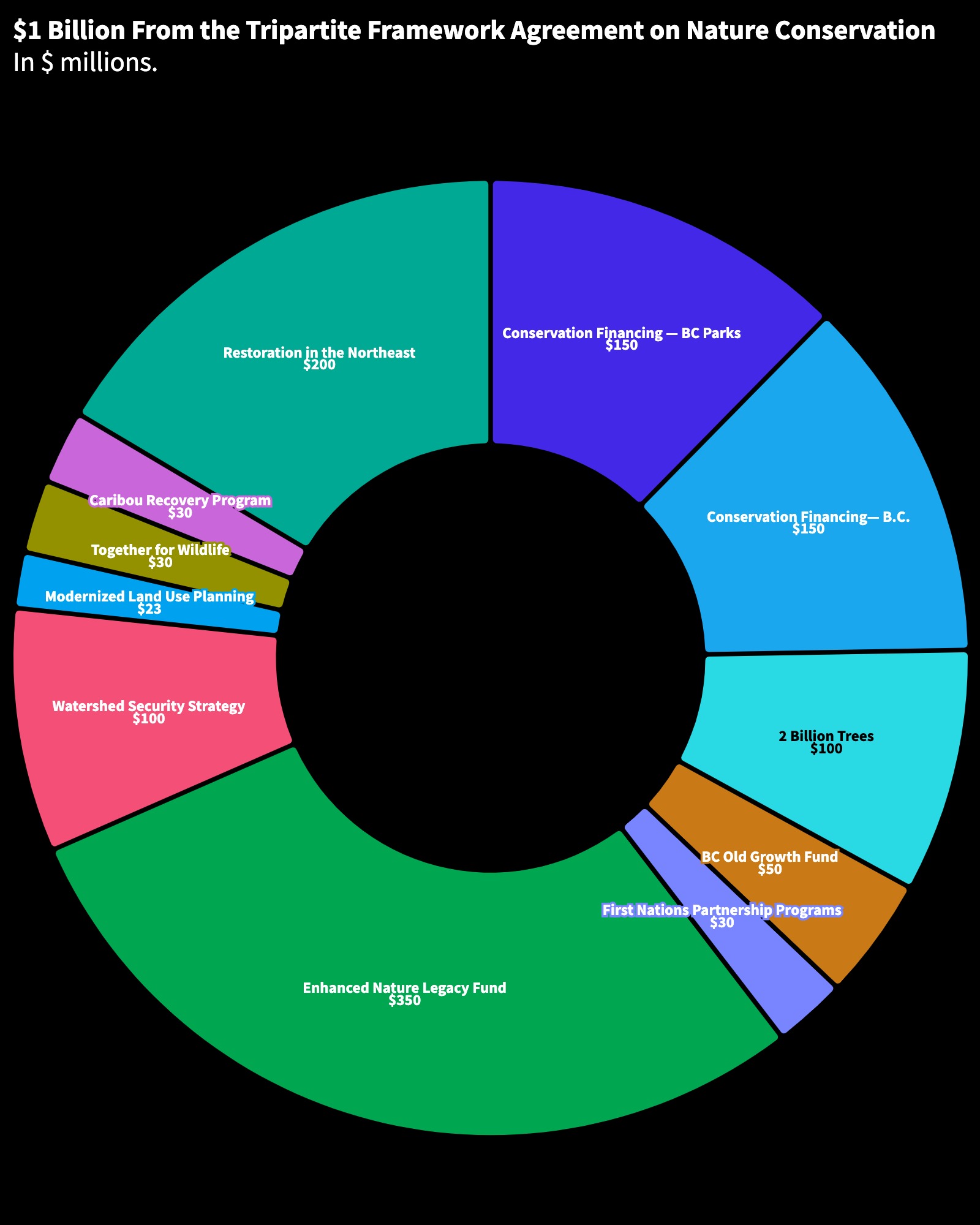
Marsden is hopeful that the jobs supported by that funding will be lasting. “Our guardian program started with two people, and it's grown,” she said, referring to the Gitanyow land guardian initiative. “Those are stable jobs people can count on.”
As the funds are disbursed, Marsden also wants to see a regional equity and biodiversity lens in place to disburse funds to places that have seen few if any funds for ecosystem protection so far.
What vehicle will drive the paradigm shift?
This fall marked the three-year anniversary since the Old Growth Strategic Review, co-authored by Merkel and Al Gorley, called for a “paradigm shift” in the forest.
The panel’s recommended stopgap measure was to defer logging in old-growth forests. But some of these forests are still being logged. In fact, a recent report from Stand.earth found that logging in priority deferral areas is around three times higher than what the province has reported.
The Ministry of Forests disputes Stand.earth’s findings, largely because it includes areas in its tally that were already logged before the technical advisory panel made its recommendations — a product of the time lag between the recommendations and the data Stand.earth used. But the province acknowledges that between the technical advisory panel’s recommendations in 2021 and June 30 of this year, 19,960 hectares of old growth have been logged.
The province has committed to instate deferrals only with the explicit consent of First Nations whose territories they affect. In an email, the Ministry of Forests said that some First Nations agreed to deferrals, and others declined to instate them or asked for deferrals to be applied to different regions in the territory. It is unclear how much funding has been available for nations to compensate for the cost of deferring logging in their territory.
Old-growth logging overall across the province remained steady at around 42,000 hectares in 2020 and 2021, according to the Ministry of Forests. Old-growth logging dropped to 28,000 hectares in 2022, the ministry said, but it added that this number is “anticipated to increase due to continued reporting in our system.”
In the meantime, the province has a long road ahead to ensure ecosystem health is the through line of its approach to managing the land.
“The framework really just describes how we're going to get from here to there,” Merkel said.
But that leaves the vehicle — the kinds of planning processes and protections the province will use to put the framework into reality — undetermined.
In its ecosystem health framework, B.C. hinted that a major conduit for the new paradigm will be ushered in through its new fleet of planning processes, including forest landscape planning, watershed strategies and modernized land use plans. In theory, those processes are intended to inform one another.
In reality, they’re being trialled through pilot projects across the province in isolation. The Quesnel timber supply area, for example, is home to one of the first forest-specific forest landscape plan pilots in the province, but it does not have a modernized land use or watershed strategy process.
“There's a bit of a weird period in the implementation part here,” said Merkel, who sees a need to pull the processes together under a more holistic, unified process.
Marsden is hopeful about the transition signalled in the announcements this fall. “I see people in the provincial government who want to see the change that’s needed.”
But she’s also looking for a sign that the layer cake of processes and agreements underway won’t detract from the work already being done, including planning within IPCAs.
“There's no silos on our territory. There's just silos in government,” Marsden said.
“It's making those links and making them strategically and operationally connected, because they are connected on the ground.” ![]()
Read more: Indigenous, BC Politics, Environment




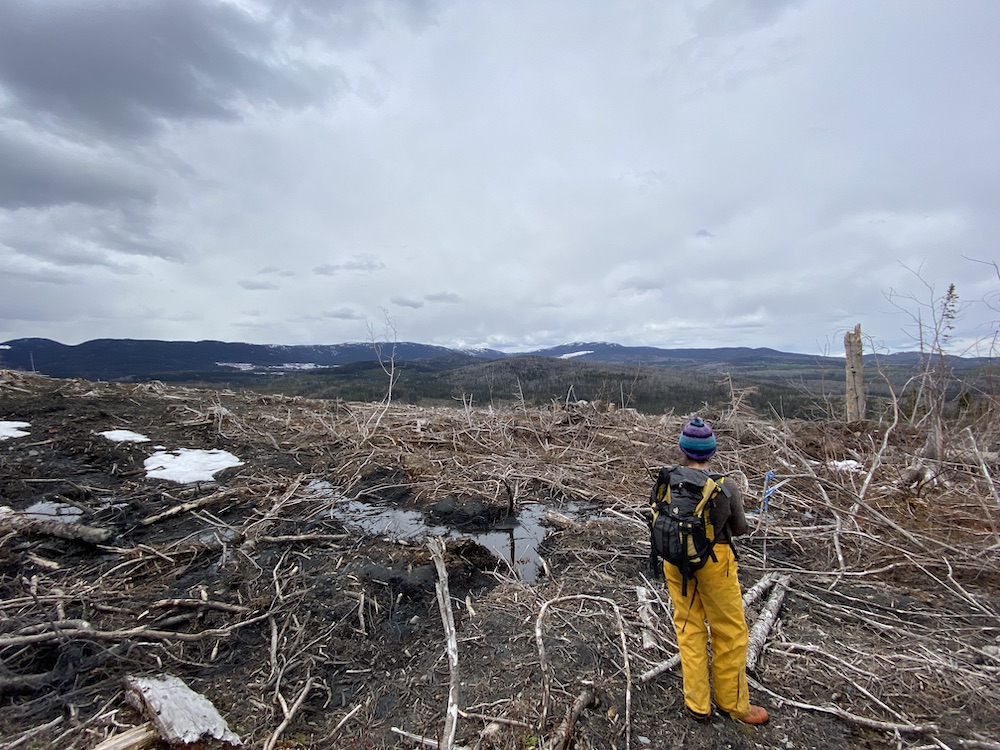
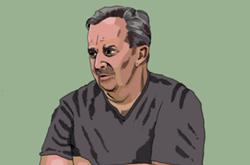
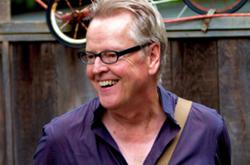

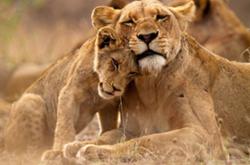








Tyee Commenting Guidelines
Comments that violate guidelines risk being deleted, and violations may result in a temporary or permanent user ban. Maintain the spirit of good conversation to stay in the discussion and be patient with moderators. Comments are reviewed regularly but not in real time.
Do:
Do not: